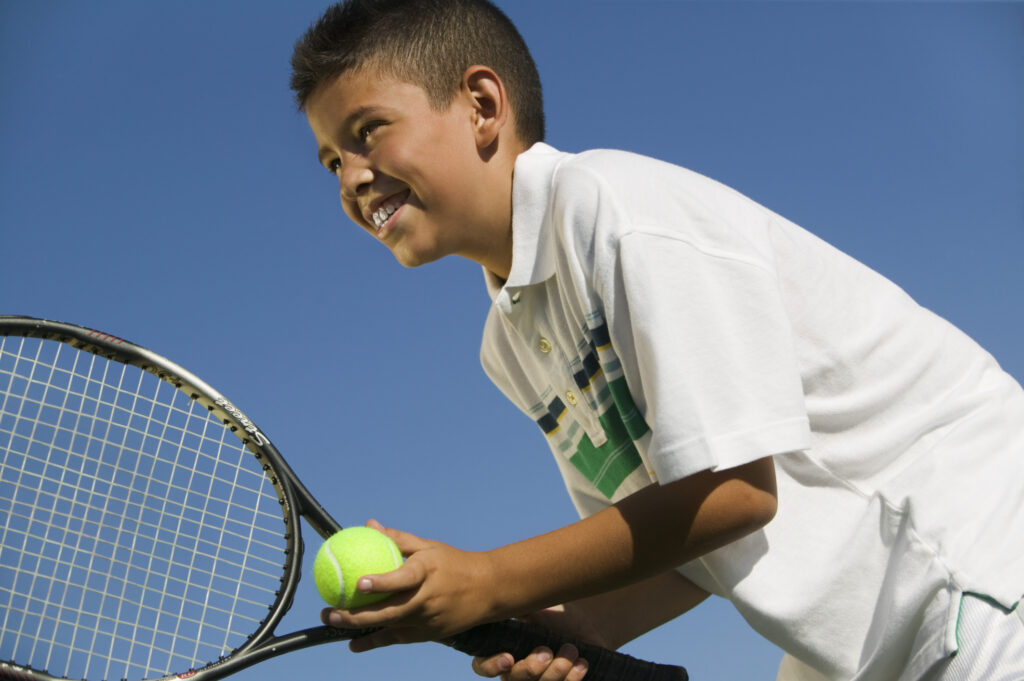From Young Beginner to Player: Finding the Best Development Path

It’s a common and often contentious debate among tennis instructors: Should we train young players with the standard yellow tennis ball or use the progressive red-to-orange-to-green approach? The latter—which relies on slower, less compressed tennis balls–is gaining momentum in tennis circles worldwide. In fact, the International Tennis Federation (ITF) recommends this approach because it better hones players’ developing skills and makes the game more fun.
Still wondering whether this is the more effective method? According to a recent study, the answer is “yes.” But before we get into the details, allow me to share my personal experience.
Early frustration even for a dedicated youngster
When I was six-years-old, my father, Alberto Luna, introduced me to the game of tennis. Although my strokes were not very good, I learned discipline and how to win. I remember how difficult it was to hit a yellow ball, which at the time seemed small and very hard. As I look back, I wish I had started with today's method. While I owe everything to my father for introducing me to tennis, my frustration level as a youngster was very high. What kept me playing initially was my desire to please my dad—I wasn’t able to enjoy the game yet.
I was a nationally-ranked player by the age of 10, but I felt discouraged. I never had time to incorporate proper tennis technique into my game. Instead of learning with age-appropriate balls, a smaller racquet and smaller court size, I was forced to work with a racquet that was too heavy for my size and a ball that was too small and hard.
A timeout for technique
It wasn't until I met Gordon Kent, one of the best coaches in the East, that my game reached a new level. He patiently took the time to work through all of my bad habits and teach me proper technique and form. If not for him, my game would never have reached a higher level. I started to love the sport, and at the age of 45, I still enjoy playing tennis frequently. It was clear to me then and it still is now–that tennis development is about the long-term, not the short-term.
A recent study proves this point. A team of instructors from Tennis Australia had some of the best players in the country alternate matches playing with a green ball (75 percent compression) and a standard yellow ball (100 percent compression). In total, 19 matches were recorded from seven different angles to analyze shots and results with each type of ball.
Here’s a look at some of the results:
►Rallies lasted the same number of shots, but were played at a higher tempo using the green ball (5.25 shots) vs. yellow ball (5.35 shots).
►Contact was made above the shoulder twice as often with the yellow ball than with the green ball. Striking the ball at repeated high contact points can lead to improper form and technique.
►More errors, characterized as 1.5 meters or more out, were made using the yellow balls (27 percent) than green balls (20 percent).
►More green balls were struck in front of the baseline (39 percent) compared to yellow balls (27 percent), a factor that allowed for more attacking and point control.
The benefits of learning with a larger and lighter green ball go on and on. When asked about the use of the green ball, players responded with an increased positive attitude.
Evidence versus opinion
Many instructors who prefer using only the standard yellow tennis ball for young players argue that choice of ball is nothing more than personal preference. But the Tennis Australia study proves them wrong. Players using the green ball made fewer errors, had longer rallies, were better able to implement proper form and technique and developed faster than if they were using the yellow ball.
For instructors trying to decide on green versus yellow, there’s no debate. Opt for green and give your young players the go-ahead for better development from the start … and for beginning a life-long love of the game!






